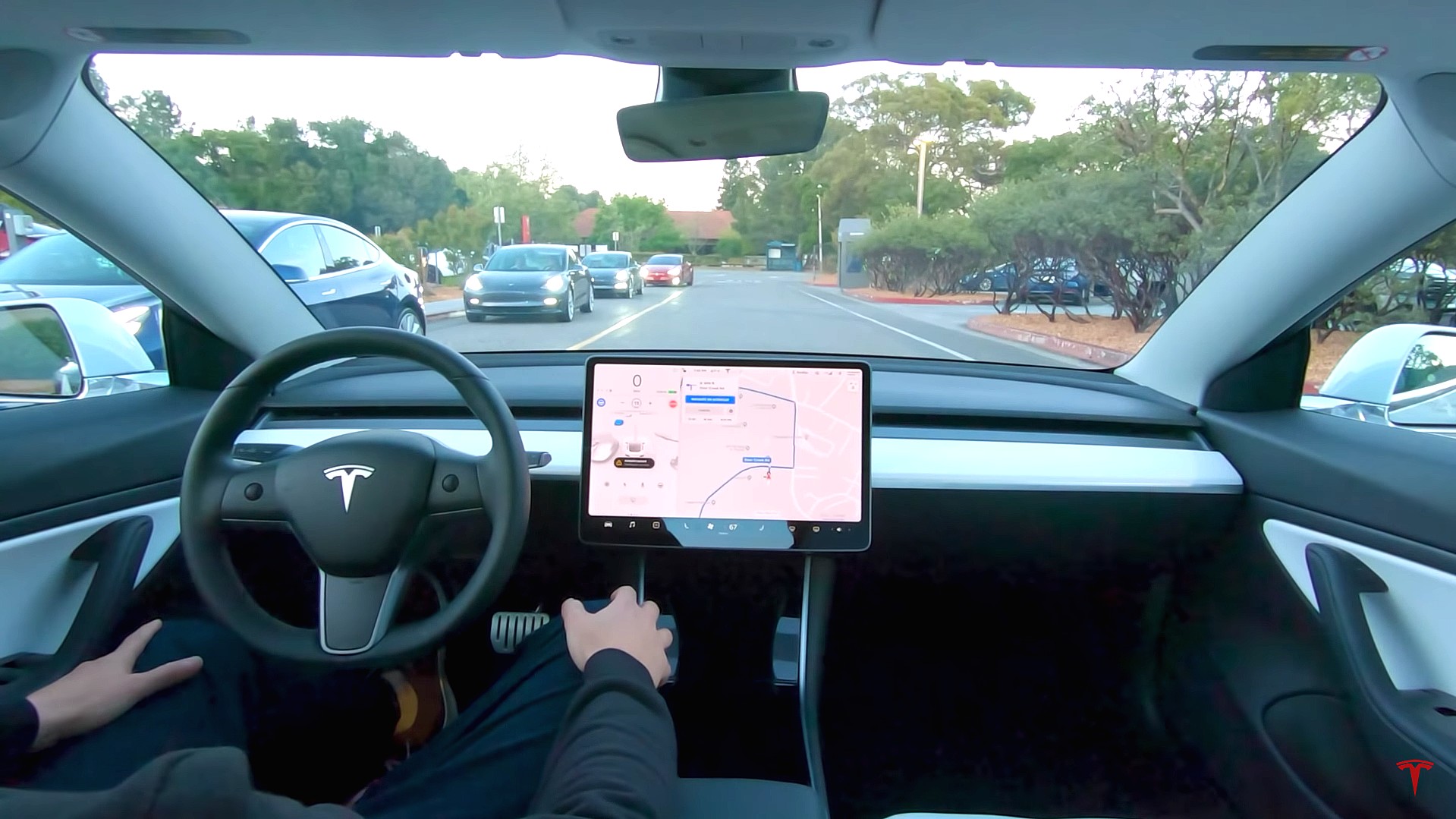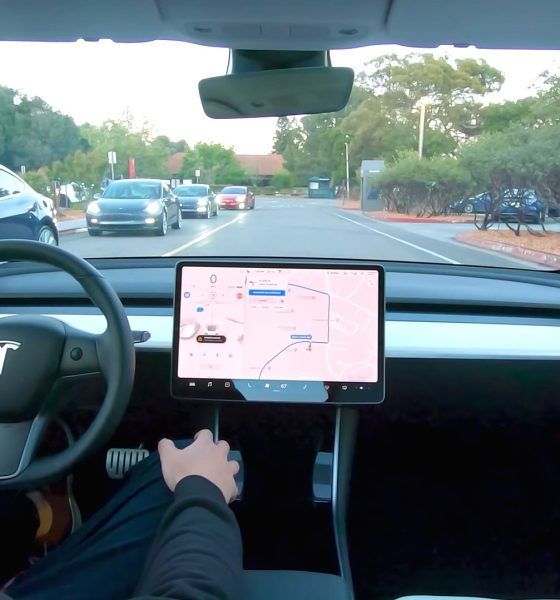

News
Self-driving cars move forward. Can we say the same for epileptic driving rights?
The future of autonomous vehicles is almost a certainty, but for people with seizures and epilepsy who are dependent and reliant on having transportation for their day-to-day activities, it is anything but. The self-driving cars of the future could offer independence and freedom for those who are not legally able to obtain a driver’s license due to their medical conditions. However, as the autonomous vehicles of the future approach with every passing day, it seems that the states and laws that surround epilepsy and driving may need re-examining, especially as companies like Tesla move toward a future involving self-driving cars.
Laws regarding epilepsy and driver’s licenses vary from state to state. However, what may be more striking than the fact that those who suffer from seizures are rarely granted driving privileges is the fact that many states have not started to prepare for a future with them on the road as passengers. The simple fact is that companies are moving closer and closer to solving autonomy every single day. Legislation has not moved forward at the pace of autonomy, which begs the question: What if self-driving cars come before those with epilepsy have the right to operate them?
According to the California Department of Motor Vehicles, what lies ahead for autonomy really depends on the companies that handle the issue. For companies like Tesla, the goal is obvious: create a car that can take away the hassle of driving and make things safer for more people. However, some of the companies involved in the fight for autonomous vehicles may not realize the act of service they are doing for those who have not had the opportunity to drive or operate a motor vehicle due to a neurological condition.
David Dobrik’s Tesla launch does not define his love for the company
The California DMV told Teslarati that it allows those with epilepsy or conditions involving seizures to be evaluated by the State to ensure they remain safe behind the wheel. “If you lose consciousness for a short period of time, you can also lose control of your vehicle, which can result in serious accidents or death,” the California DMV writes on its website. Those who are interested in obtaining a driver’s license will undergo an evaluation, which uses the “Lapse of Consciousness Consolidation Table” as a benchmark to determine whether a person seems capable of driving a vehicle.
Obviously, whether the person receives driving privileges or not is completely dependent on the symptoms, severity, and causes of their condition. The chart is extensive and uses ten pages of tables to evaluate a potential driver, leaving no room for personal interpretation or grey areas. Additionally, provisionally available license grants are possible depending on a lapse of time in between episodes. However, it requires full medical transparency from the driver, including regular check-ins that are technically written and law-abiding statements. Falsifying the status of one’s condition can ultimately result in the suspension and possible revocation of a driver’s license.
While all of these details provide some color to the potential rights of those who would be interested in obtaining the privilege to drive a vehicle, there is still a major miscommunication on the potential of what self-driving cars could do for people who are not eligible for a license. Additionally, it could benefit some drivers who may be fit to drive but are uncomfortable with disclosing medical information with relation to the HIPAA act. When Level 5 autonomy is reached by a company, laws and legislation will have to be written or revised to include those who would like to have their vehicle drive them to a destination. Unfortunately, while companies chip away and move closer to this goal, the lack of knowledge on the part of DMVs at the current time was shocking. Relatively no detail was given by the California DMV, where Tesla was located until late September. Meanwhile, Waymo and Pony.ai still call California home in Mountain View and Fremont, respectively.
While the evaluation process is clear and concise, it only takes into account the instances where those with epilepsy would be able to drive a car, and not in the instance that a car drives itself. Essentially, the preparedness of government agencies to cater to those with disorders could result in even more time wasted for those who are affected.
The status of the self-driving industry is also moving forward at a tremendous rate. Tesla is expanding its Full Self-Driving Beta program and is focusing on gathering more data with the help of its Beta fleet to make its neural network more robust. Waymo is launching somewhat successful moves toward autonomous driving, and Pony.ai is launching Robotaxis in Beijing.
Waymo’s self-driving cars invade San Francisco street in most bizarre way possible
States need to begin working toward clarifying the situation between self-driving cars and the epileptic. There is too much room for interpretation currently, and the issue is much more serious than just “hitching a ride.” The revolutionary change that has already started occurring with electric cars will see something extremely similar with self-driving vehicles: a lack of understanding and infrastructure that could potentially delay progression and derail advancement in the way people with neurological disorders get from place to place.
Don’t hesitate to contact us with tips! Email us at tips@teslarati.com, or you can email me directly at joey@teslarati.com.

News
Tesla starts showing how FSD will change lives in Europe
Local officials tested the system on narrow country roads and were impressed by FSD’s smooth, human-like driving, with some calling the service a game-changer for everyday life in areas that are far from urban centers.

Tesla has launched Europe’s first public shuttle service using Full Self-Driving (Supervised) in the rural Eifelkreis Bitburg-Prüm region of Germany, demonstrating how the technology can restore independence and mobility for people who struggle with limited transport options.
Local officials tested the system on narrow country roads and were impressed by FSD’s smooth, human-like driving, with some calling the service a game-changer for everyday life in areas that are far from urban centers.
Officials see real impact on rural residents
Arzfeld Mayor Johannes Kuhl and District Administrator Andreas Kruppert personally tested the Tesla shuttle service. This allowed them to see just how well FSD navigated winding lanes and rural roads confidently. Kruppert said, “Autonomous driving sounds like science fiction to many, but we simply see here that it works totally well in rural regions too.” Kuhl, for his part, also noted that FSD “feels like a very experienced driver.”
The pilot complements the area’s “Citizen Bus” program, which provides on-demand rides for elderly residents who can no longer drive themselves. Tesla Europe shared a video of a demonstration of the service, highlighting how FSD gives people their freedom back, even in places where public transport is not as prevalent.
What the Ministry for Economic Affairs and Transport says
Rhineland-Palatinate’s Minister Daniela Schmitt supported the project, praising the collaboration that made this “first of its kind in Europe” possible. As per the ministry, the rural rollout for the service shows FSD’s potential beyond major cities, and it delivers tangible benefits like grocery runs, doctor visits, and social connections for isolated residents.
“Reliable and flexible mobility is especially vital in rural areas. With the launch of a shuttle service using self-driving vehicles (FSD supervised) by Tesla in the Eifelkreis Bitburg-Prüm, an innovative pilot project is now getting underway that complements local community bus services. It is the first project of its kind in Europe.
“The result is a real gain for rural mobility: greater accessibility, more flexibility and tangible benefits for everyday life. A strong signal for innovation, cooperation and future-oriented mobility beyond urban centers,” the ministry wrote in a LinkedIn post.
News
Tesla China quietly posts Robotaxi-related job listing
Tesla China is currently seeking a Low Voltage Electrical Engineer to work on circuit board design for the company’s autonomous vehicles.

Tesla has posted a new job listing in Shanghai explicitly tied to its Robotaxi program, fueling speculation that the company is preparing to launch its dedicated autonomous ride-hailing service in China.
As noted in the listing, Tesla China is currently seeking a Low Voltage Electrical Engineer to work on circuit board design for the company’s autonomous vehicles.
Robotaxi-specific role
The listing, which was shared on social media platform X by industry watcher @tslaming, suggested that Tesla China is looking to fill the role urgently. The job listing itself specifically mentions that the person hired for the role will be working on the Low Voltage Hardware team, which would design the circuit boards that would serve as the nervous system of the Robotaxi.
Key tasks for the role, as indicated in the job listing, include collaboration with PCB layout, firmware, mechanical, program management, and validation teams, among other responsibilities. The role is based in Shanghai.
China Robotaxi launch
China represents a massive potential market for robotaxis, with its dense urban centers and supportive policies in select cities. Tesla has limited permission to roll out FSD in the country, though despite this, its vehicles have been hailed as among the best in the market when it comes to autonomous features. So far, at least, it appears that China supports Tesla’s FSD and Robotaxi rollout.
This was hinted at in November, when Tesla brought the Cybercab to the 8th China International Import Expo (CIIE) in Shanghai, marking the first time that the autonomous two-seater was brought to the Asia-Pacific region. The vehicle, despite not having a release date in China, received a significant amount of interest among the event’s attendees.
Elon Musk
Elon Musk and Tesla AI Director share insights after empty driver seat Robotaxi rides
The executives’ unoccupied tests hint at the rapid progress of Tesla’s unsupervised Robotaxi efforts.

Tesla CEO Elon Musk and AI Director Ashok Elluswamy celebrated Christmas Eve by sharing personal experiences with Robotaxi vehicles that had no safety monitor or occupant in the driver’s seat. Musk described the system’s “perfect driving” around Austin, while Elluswamy posted video from the back seat, calling it “an amazing experience.”
The executives’ unoccupied tests hint at the rapid progress of Tesla’s unsupervised Robotaxi efforts.
Elon and Ashok’s firsthand Robotaxi insights
Prior to Musk and the Tesla AI Director’s posts, sightings of unmanned Teslas navigating public roads were widely shared on social media. One such vehicle was spotted in Austin, Texas, which Elon Musk acknowleged by stating that “Testing is underway with no occupants in the car.”
Based on his Christmas Eve post, Musk seemed to have tested an unmanned Tesla himself. “A Tesla with no safety monitor in the car and me sitting in the passenger seat took me all around Austin on Sunday with perfect driving,” Musk wrote in his post.
Elluswamy responded with a 2-minute video showing himself in the rear of an unmanned Tesla. The video featured the vehicle’s empty front seats, as well as its smooth handling through real-world traffic. He captioned his video with the words, “It’s an amazing experience!”
Towards Unsupervised operations
During an xAI Hackathon earlier this month, Elon Musk mentioned that Tesla owed be removing Safety Monitors from its Robotaxis in Austin in just three weeks. “Unsupervised is pretty much solved at this point. So there will be Tesla Robotaxis operating in Austin with no one in them. Not even anyone in the passenger seat in about three weeks,” he said. Musk echoed similar estimates at the 2025 Annual Shareholder Meeting and the Q3 2025 earnings call.
Considering the insights that were posted Musk and Elluswamy, it does appear that Tesla is working hard towards operating its Robotaxis with no safety monitors. This is quite impressive considering that the service was launched just earlier this year.








